D'Amigo, 23, had three points (1G / 2A) in 22 games with the Maple Leafs last season. While in the AHL he was able to post 20 goals and 13 assists (33 points) in 51 contests. He is a strong two-way player with an ability to score.

D'Amigo, 23, had three points (1G / 2A) in 22 games with the Maple Leafs last season. While in the AHL he was able to post 20 goals and 13 assists (33 points) in 51 contests. He is a strong two-way player with an ability to score.

Frattin, 26, returns to Toronto after he was dealt to the Kings in the Jonathan Bernier trade. After 40 games with Los Angeles he was traded to Columbus in the Marian Gaborik deal. He finished the season with two goals and five assists in 44 total games.

Stuart, 34, had just 11 points (3G / 8A) in 61 games with the Sharks last season. His offence is not where it used to be, but he brings a stable and physical game to the Avalanche's blueline.

Gorges, 29, had 14 points (1G / 13A) in 66 games with the Canadiens this season. He turned down the opportunity to get traded to the Maple Leafs earlier in the week, but now heads to the Sabres, who were the NHL's worst teams last season. He will step into a leadership role on a young Sabres team.
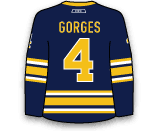
Karlsson, 23, had 11 goals and 13 assists (24 points) in 39 games with the Elmira Jackals of the ECHL.

Guptill, 22, was a third-round pick (77th overall) in the 2010 NHL Entry Draft. Guptill scored 12 goals with 13 assists (25 points) in 31 games at the University of Michigan.

Paul, 19, was selected in the fourth-round (#101 overall) in the 2013 NHL Entry Draft. Paul had 26 goals and 20 assists (46 points) in 67 games with the North Bay Battalion (OHL) this season. Paul had a strong postseason as well, posting 18 points (12G / 6A) in 22 games.

Chiasson, 23, recorded 35 points (13G / 22A) in 79 games for the Stars last season. Chiasson is a big forward at 6-foot-4, 205 lbs. and has shown an ability to score in the NHL. At this point in his career, Chiasson will likely find himself in the Senators top-9 opposed to the top-6.

Spezza, 31, scored 23 goals with 43 assists (66 points) in 75 games with the Senators in 2013-14. Spezza, who made it clear that he wanted out of Ottawa, refused a deal to Nashville on Draft Day, but is now on his was to Dallas. He will join Tyler Seguin as the Stars 1-2 punch. He carries a $7 million cap-hit in this, his final season on a seven-year deal.

Briere, 36, scored 13 goals with 12 assists (25 points) in 69 games with Montreal. He found himself relegated to the fourth-line for much of the season and playoffs. The trade adds an experienced forward to a young and up-and-coming team. Briere will be entering his final year of a two-year $8 million dollar deal.

There were rumblings of a possible trade in the middle of the season, but the Avs waited until the offseason to ship him for a veteran forward. Parenteau missed 27 games with a knee injury in 2013-14 and finished the year with 14 goals and 19 assists (33 points) in 55 games. He will look to land a top-6 role in Montreal. The trade has no effect on the salary cap of either team for the 2014-15 season, with Briere and Parenteau each scheduled to make $4 million. The difference is Parenteau has an extra year on his contract with Briere entering the final season of his.
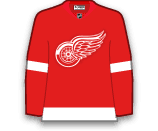
Thompson, 29, had nine goals and seven assists (16 points) in 81 games for the Ducks last season. He adds forward depth to the Ducks lineup and will likely centre the Ducks' fourth line in 2014-15.

The Coyotes were in the market for a center after buying out Mike Ribeiro on Friday. Gagner, 24, had 10 goals and 27 assists in 67 games last season after missing the first 13 games recovering from a broken jaw. He has two years remaining on a contract with an annual cap-hit of $4.8 million.
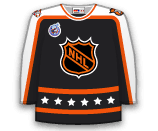
Purcell is signed through the next two seasons with a $4.5 million dollar cap-hit. The 6-foot-3, 203 lbs. right winger had 12 goals and 30 assists (42 points) in 81 games with the Lightning. Purcell has missed just three games over the last four seasons and is capable of scoring 25 goals with the Oilers this season. He will likely find himself in the Oilers top-6.
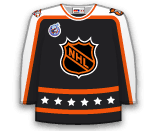
Pasquale, 23, was 17-13-1 with a 2.43 GAA and .920 SV% in 31 games with the St. John's IceCaps last season. He will likely find himself with the Hershey Bears in 2014-15.
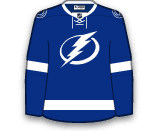
Bollig scored seven goals with seven assists and appeared in all 82 games with the Hawks last season. He brings a physical style of play to the Flames, but he likely won't help anyone's fantasy team next season.

Gunnarsson had three goals and 14 assists in 80 games with the Maple Leafs last season. He averaged 19:25 TOI playing on the top pairing with Dion Phaneuf. He will likely slot in on the Blues' bottom pair or on the second unit with Kevin Shattenkirk. He will be better off playing a reduced role in St. Louis.

Polak, 28, is 6-foot-1, 225 lbs. and plays a very safe, stay-at-home defensive style. The Leafs blueline was questionable at times in 2013-14, but now they can slide the physical Polak beside Jake Gardiner or Morgan Rielly and allow them to play more offence while Polak provides a steady presence in the defensive zone.

Vey had five assists in 18 games with the Kings last season. While in the AHL he recorded 14 goals and 34 assists (48 points) in 43 games. Vey will challenge to make the Canucks out of training camp.
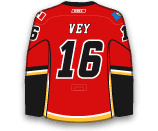
Spaling, who is a pending a restricted free-agent, had a strong season with the Predators in 2013-14. He goes to Pittsburgh where he will find himself in a third or fourth-line role. If he can repeat the 13 goals and 19 assists (32 points) in 71 games he had last season, the Pens will be more than happy.

NHL trades are decided between two or more team general managers. The front office’s job is building a winning team. Building a winning team means discussing trades with other general managers across the league.
During the NHL regular season, players can be traded up until the trade deadline. The deadline is the official cutoff point for when teams can no longer make moves between each other. Players can also be traded throughout the offseason.
Teams trade players in hockey for a variety of reasons, but generally, it is done to find success, whether that is in the short term or long term. Teams may trade their top players in search of draft picks if they are undergoing a rebuild, whereas contending teams may look to acquire talent to boost their playoff chances.
Trades are a common occurrence throughout the NHL and happen often. Some years feature less trades than others, it all depends on each teams needs and the availability of attractive talent.